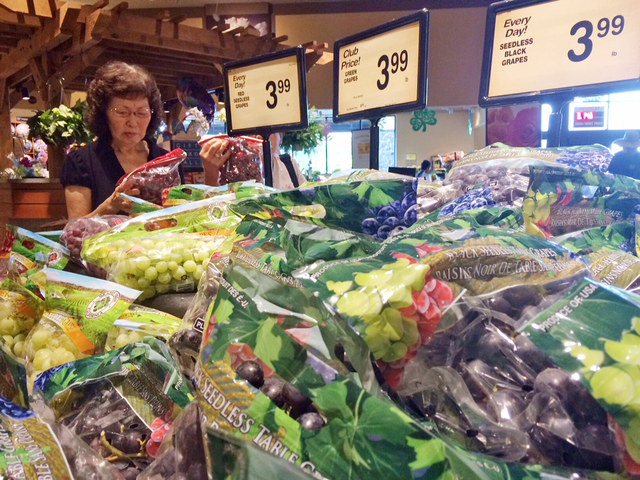California’s severe drought continues to raise concerns about the national food supply, and while the dry conditions on the mainland have yet to appreciably affect Hawaii’s food chain, local officials, food suppliers and farmers are nevertheless beginning to think long term.
A report published last month by the U.S. Department of Agriculture observed that historically, California droughts are associated with higher retail prices for produce, but that these effects are not instantaneous. According to the report, fresh fruit prices are expected to rise 2.5 to 3.5 percent this year, and fresh vegetable prices 2 to 3 percent, which is in line with historical averages.
“However, depending on its continued severity, the drought in California has the potential to drive prices for fruit, vegetables, dairy, and eggs up even further,” the report continues.
California produces more than half the nation’s fruit, nuts and vegetables, and is the No. 1 dairy state.
Dairy prices would be affected by reduced supplies of alfalfa, the main type of food for dairy cows. Egg prices have also been affected by avian influenza killing millions of laying hens earlier this summer.
Since nearly all of Hawaii’s food is imported, residents are particularly susceptible to mainland price changes.
State Rep. Clift Tsuji, D- South Hilo, chair of the House Committee on Agriculture, told the Tribune-Herald last week that he had recently begun to contact links in the state food supply chain, from supermarket food procurement officers to members of the Hawaii Farm Bureau. While the California drought was on people’s minds, he said, it so far had not had shown an noticeable effect or created food shortages.
“When we talk about procurement, yes, California is and always has been a concern for fresh fruit products,” Tsuji said.
He said one grocery chain he spoke with was trying to focus more on local procurement.
“They truly believe our local suppliers will be able to help,” Tsuji said.
Dave Sansone, owner of Agroforestry Design, discussed possible effects of the California drought during a meeting of Natural Farming Hawaii on Tuesday night. Agroforestry Design provides consulting for building permaculture (farming that mirrors natural ecosystems) on the island.
The drought was a “slow moving trainwreck,” he said.
For Sansone, creating sustainable systems on the Big Island was one way of insulating residents from environmental disasters and addressing Hawaii’s food challenges.
“Here in Hawaii, really, permaculture is a combination of indigenous land management tactics,” Sansone said, referring to the ahupua‘a. “Hawaii was traditionally a world leader in sustainability.”
After Tropical Storm Iselle hit last year and Puna residents found themselves unable to bring supplies to their home, a group got together to form Modern Ahupua‘a to address food security. But even something as simple as starting a garden could go a long way.
“If you have a disaster, you can’t get out to a farm, but you have your own supply,” Sansone said. “I prefer to be two steps ahead than two steps behind.”
Still, drought could hit a bit closer to home as the year progresses. The National Oceanic Atmospheric Association has noted that a strong El Niño in the Pacific this summer is expected to bring a drier-than-usual fall to the Big Island. The leeward side of the island and its pastureland is far more susceptible to the effects of drought.
“We need a viable agriculture industry,” Tsuji said. “It requires steady, reliable water supply that is immune to adverse conditions.”
In 2007, Tsuji introduced a successful drought mitigation bill which appropriated $4 million from the Department of Land and Natural Resources to be divided among the counties. Each county had formed a drought committee in 2004, creating mitigation strategies such as reservoirs for increased storage and better wildfire training for firefighters to address disaster concerns. The 2007 bill provided funding for implementing these strategies.
A similar bill, proposing $250,000 for mitigation, was introduced during this year’s legislative session, but did not make it out of conferencing.
Tsuji said that he planned to put drought mitigation legislation before the House during the next session as well. “This is one that we consider very important, and it’s at the top of my list,” he said. “Until we hear that everything is A-OK, this is still a never-ending journey.”
Email Ivy Ashe at iashe@hawaiitribune-herald.com








